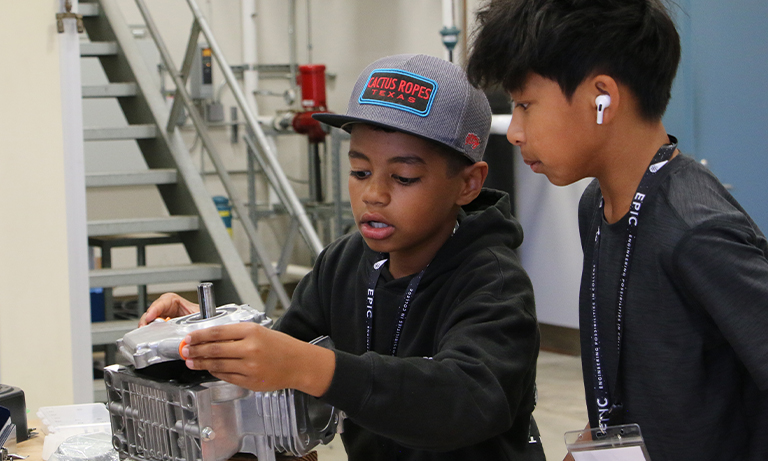A team of eight undergraduate students from both Mechanical and Computer Engineering under the supervision of Dr. Charles Birdsong (ME) and Bruce DeBruhl (CS) worked together in conjunction with their senior project/capstone course to develop an autonomous vehicle platooning project for the 2019 Enhanced Safety of Vehicles (ESV) Enhanced Safety of Vehicle International Student Design Competition in June.
Vehicle platooning is a concept where cars or trucks autonomously drive very closely together at high speeds on highways to reduce traffic and increase fuel efficiency. The overall goal of this project was to address the artificial intelligence needed when external disturbances affect the platoon. The team developed two identical vehicles based on 10th scale remote control cars that included stereo cameras, vehicle to vehicle communication and high performance Jetson Tx2 microprocessors. They used IPG CarMaker to test their control strategies in simulation before the hardware was complete and programmed the vehicles to negotiate a track using camera based lane detection. The follower vehicle used a control system that combined distance estimation and vehicle-to-vehicle communication to maintain a fixed distance to the lead car and respond instantly to changes in order to avoid wave propagation that leads to traffic congestion. They also included an image based neural network to identify common obstacles such as road signs and pedestrians; and used the stereo camera to estimate the distance and location of obstacles and decide how to react. If the next lane is free, the platoon automatically executes a lane change maneuver. If there is no path around the obstacle, the platoon stops.
The team presented their concept to the US Department of Transportation in April and was selected among other US universities to represent North America at the ESV Conference in Eindhoven Netherlands in June. Four students from the team and Birdsong traveled to the conference to present the project and compete. The students presented the system to government and auto industry experts at the conference exhibition over three days and gave a technical presentation at the conference along with four other universities from the US and Asia. The Cal Poly team won 2nd place in the international competition. The judges awarded first place to a team that included eight Ph.D. students from Virginia Tech’s Transportation Institute. The other team projects address a rear impact driver warning system (Virginia Tech), automatic vehicle damage and passenger injury assessment (Oregon State), a lumbar spine crash test dummy (Nihon University, Japan) and an autonomous car fault detection system (School of Mechanical and Aerospace Engineering, Seoul National University).
Birdsong and DeBruhl plan to use the hardware that the team developed to investigate more topics in the area of autonomous vehicles, platooning and cyber security. Special thanks to Peter Schuster and Lynn Slivovsky, the senior project instructors, and sponsors Daimler Trucks North America, IPG Carmaker, US Department of Transportation and MESFAC for their financial support.
A short video of the project can be found on YouTube at https://youtu.be/t-Rq4tDISsg


